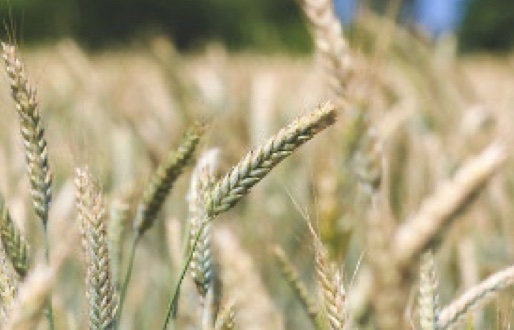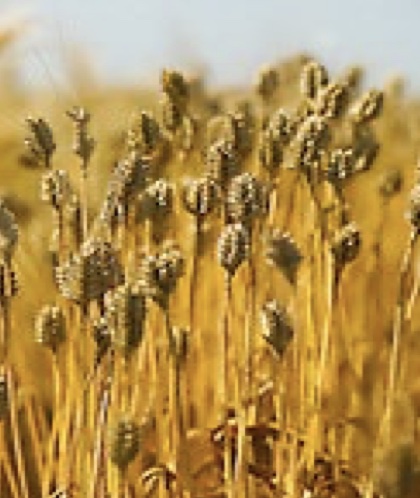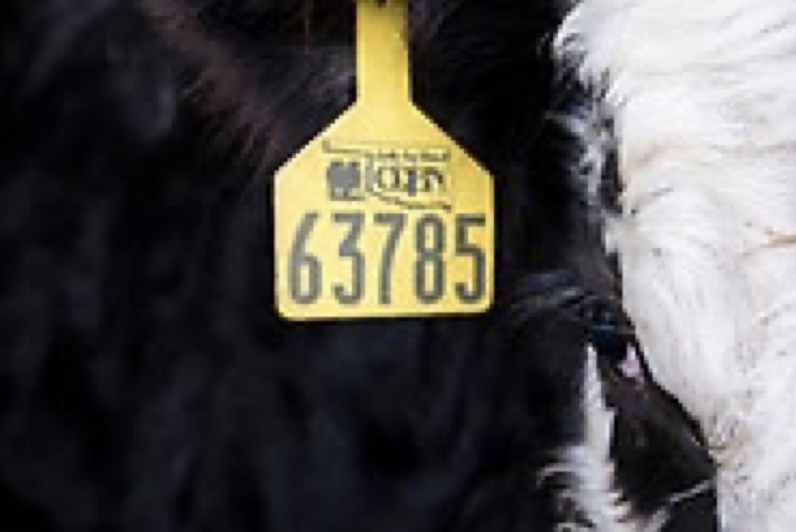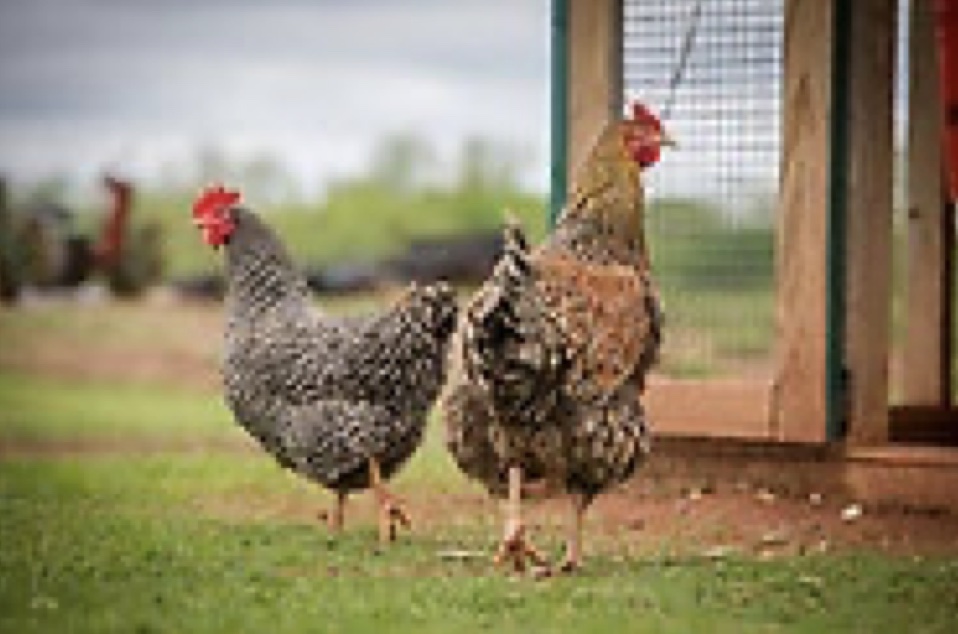Ag Insights September 2023
Friday, September 1, 2023
Cool Season Options
Josh Bushong, West Area Extension Crops Specialist
Winter wheat is and has been a staple cool season crop especially for western Oklahoma. In addition to wheat for either pasture and/or grain, there are some other small grain options such as triticale, rye, barley, and oats. There is also an increase in interest with winter canola again due to Scoular offering a local market to the southern great plains.
Cereal rye can be good option for a fall grazing pasture with some early spring pasture but will typically hit first hollow stem sooner than wheat. It performs well in sandy or slightly more acidic soils when compared to wheat. In addition to good fall forage potential, rye will also continue to grow more in the winter months compared to wheat. Feral rye is a major weed risk for wheat rotations because there are not any herbicide control options in conventional wheat.
 Triticale is a cross between wheat and rye. Therefore, it’s a good balance of fall
and spring forage potential. Triticale can be a little more sporadic when it hits
first hollow stem, but usually it will be later than wheat in my experience. It can
be a little harder to find seed, but it’s getting better as acres have increased.
It can get tall as it matures, and lodging has been a small concern for some that
grow it.
Triticale is a cross between wheat and rye. Therefore, it’s a good balance of fall
and spring forage potential. Triticale can be a little more sporadic when it hits
first hollow stem, but usually it will be later than wheat in my experience. It can
be a little harder to find seed, but it’s getting better as acres have increased.
It can get tall as it matures, and lodging has been a small concern for some that
grow it.
 Most producers are familiar with spring oats, but most varieties can also be planted
in early fall to achieve a high yielding forage before a killing freeze. There are
some winter oat varieties that can survive most winters in this region, but a harsh
winter can greatly reduce stands and potential spring forage growth. Both spring and
winter oats typically perform better on good ground with favorable growing conditions,
as they can be more drought sensitive compared to other small grains.
Most producers are familiar with spring oats, but most varieties can also be planted
in early fall to achieve a high yielding forage before a killing freeze. There are
some winter oat varieties that can survive most winters in this region, but a harsh
winter can greatly reduce stands and potential spring forage growth. Both spring and
winter oats typically perform better on good ground with favorable growing conditions,
as they can be more drought sensitive compared to other small grains.
Winter barley is another option to achieve good fall pasture. Barley can produce a great palatable and high-quality forage, while having some drought and heat tolerance. If planted too late in the fall, other small grains like rye, triticale, and wheat will have a higher probability to produce more overall forage the rest of the season.
Another cool-season option is winter canola. It has been well documented by Oklahoma State University that rotating to canola for just one year can greatly reduce grassy weed infestations by 85-95%, increase the following wheat grain yields by 10-20%, as well as increase the following wheat crop forage yield by more than 20%. When it was first introduced into the region, about 20 years ago, the main reason to consider it was to clean up wheat fields. Seed wheat producers also like it, as it gives them a crop to grow when switching to a new wheat variety.
 As some producers are starting to shift their focus on other options like cover crops,
canola fits well in that train of thought too. It is a great tool to use as it can
be a cover crop with a good chance of being a cash crop.
As some producers are starting to shift their focus on other options like cover crops,
canola fits well in that train of thought too. It is a great tool to use as it can
be a cover crop with a good chance of being a cash crop.
Being a large taprooted winter broadleaf crop, it can assist in improving soil health and rain infiltration into the soil. There are also different herbicide options that can be used to control grass weeds. Scoular plans to crush canola at their Goodland, KS location next fall. In addition to Scoular offering Act-of-God bushel production contracts, there are still many local delivery points across the region that will either buy directly from farmers or work with Scoular to market the crop. Crop rotations between a grass crop like wheat and a broadleaf crop like canola helps reduce pest pressures. Many issues, including insects and diseases, we often combat in wheat can be reduced if canola is planted.
Consider OQBN This Fall
Dana Zook, West Area Extension Livestock Specialist
As the calendar rolls to September, cow-calf producers who own spring calving herds will begin to prep for weaning and consider marketing opportunities. Markets look strong in the coming season but there are preconditioning programs that have historically offered a premium for calves even in times of high prices. These programs help producers highlight any management in calves they raise. OSU Extension offers a preconditioning program called Oklahoma Beef Quality Network (OQBN) that can highlight preconditioning management, vaccination and extra nutrition applied after weaning.
The OQBN program is a joint project between OSU Extension and the Oklahoma Cattlemen’s Association. OQBN is a network of beef producers, educators, veterinarians, and industry professionals committed to increasing producers access to value added marketing opportunities. This program sets itself apart because all management and vaccination documentation is third party verified by OSU Extension personnel.
 You might be wondering what it takes to enroll in the program. The OQBN program requires
that cattle are raised from the ranch of origin, weaned a minimum of 45 days, have
two full rounds of shots, and are bunk trained. Steers must be castrated, and all
calves must be dehorned. All calves should be healed from these procedures and appear
in good health on sale day. To enroll in the program, producers will also need to
be Beef Quality Assurance (BQA) certified. This can be done by attending an in-person
training or taking the online BQA course.
You might be wondering what it takes to enroll in the program. The OQBN program requires
that cattle are raised from the ranch of origin, weaned a minimum of 45 days, have
two full rounds of shots, and are bunk trained. Steers must be castrated, and all
calves must be dehorned. All calves should be healed from these procedures and appear
in good health on sale day. To enroll in the program, producers will also need to
be Beef Quality Assurance (BQA) certified. This can be done by attending an in-person
training or taking the online BQA course.
The OQBN Vac-45 program, and other preconditioning programs benefit both buyers and sellers in several ways, including reduced shrinkage, stronger immunity, and improved weight gain during the weaning and preconditioning period. In 2022, OQBN participants realized a $18.67/cwt premium over cattle that had no weaning or health history. Buyers offset purchase prices by having very low death loss and excellent feed conversion right off the bat.
Why would a producer want to consider a program like this? Cattle producers do a great deal of work to wean, vaccinate and adapt cattle to the next stage of production. Enrolling in a program that highlights extra work, management, and the quality of your calves may help a producer offset preconditioning costs. If you are doing the work, why not shine a light on all those extra hours of management? That being said, OQBN and other preconditioning programs are not for everyone and there are times when it doesn’t make sense to keep the calves around for an extra 45 days. Do the best with what you have but consider alternative ways to highlight your management. Alternative marketing opportunities like this abound in the industry and you might find another option that works for your situation.
Those on the fence about preconditioning this fall should contact your local county extension educator or area livestock specialist for more details. We can walk you through the program, explain the vaccination requirements, and give tips on nutrition. That is one of the great things about OQBN; you have OSU extension beef educators and specialists in your wheelhouse to help you every step of the way. For more information, check out the Oklahoma Quality Beef network website.
Nematodes in Chickens
Barry Whitworth, DVM
Senior Extension Specialist
Oklahoma State University
Department of Animan & Food Sciences
Nematodes (roundworms) are common parasites in chic kens. With the modernization of commercial poultry production, many nematode infections have been reduced. However, free range and backyard flocks have issues with parasites because they are in constant contact with the outdoors. Fortunately, clinical illness is not usually a problem unless parasite burdens become severe. The most common roundworms causing issues in poultry are ascarids, cecal worms, and thread worms.
 Ascaridia galli species, commonly referred to as ascarids, are the largest nematode in poultry. The
white female roundworms may measure over 4 inches in length. Ascarids are located
in the small intestines of domestic and wild birds. The worms have a simple and direct
life cycle. This means that the worm eggs pass in the fecal material of the parasitized
birds. Birds are infected when they ingest feces or fecal contaminated food or water.
Adult birds rarely have issues with ascarid infection, but chicks are more susceptible.
In moderate infections, clinical illness is rare. However, heavy burdens of worms
result in weight loss, weakness, and diarrhea. In severe infection, intestinal blockage
may occur resulting in death. A rare finding with A. galli is the appearance of the
parasite in a hen’s egg.
Ascaridia galli species, commonly referred to as ascarids, are the largest nematode in poultry. The
white female roundworms may measure over 4 inches in length. Ascarids are located
in the small intestines of domestic and wild birds. The worms have a simple and direct
life cycle. This means that the worm eggs pass in the fecal material of the parasitized
birds. Birds are infected when they ingest feces or fecal contaminated food or water.
Adult birds rarely have issues with ascarid infection, but chicks are more susceptible.
In moderate infections, clinical illness is rare. However, heavy burdens of worms
result in weight loss, weakness, and diarrhea. In severe infection, intestinal blockage
may occur resulting in death. A rare finding with A. galli is the appearance of the
parasite in a hen’s egg.
Heterakis gallinarum, commonly known as the cecal worm, is the most common nematode found in poultry. Cecal worms, as the name implies, are located in the cecum. H. gallinarum usually does not cause any health issues in chickens. The life cycle begins when the roundworm eggs pass in the droppings of the bird. Birds become infected when they ingest cecal worm eggs. The eggs can be found in fecal contaminated feed or water. Also, the eggs can be ingested by earthworms which can be eaten by birds. The major problem with cecal worms is their eggs can be contaminated with the protozoan Histomonas meleagridis. H. meleagridis is the cause Histomoniasis or “blackhead” disease in turkeys and occasionally other species of birds. More information on Histomoniasis can be found in a previous article published in the June 2022 edition of OKFR magazine.
Capillaria or thread worms, as their common name implies, are very small thin worms. They cannot be seen without magnification. Several different species of Capillaria infect chickens. Some thread worms have a direct life cycle. Eggs pass in the feces, and birds may be infected when they eat contaminated feed and water. Other species of thread worms rely on an intermediate host such as earthworms to ingest the eggs. Birds become infected when they eat the earthworms. These worms infect different areas of the birds which result in a variety of clinical signs. As with most parasites, the young are more susceptible to illness than older birds. Severe infections result in poor appetite, weight loss, diarrhea which may contain blood, and sometimes death. Low numbers of worms result in production issues such as poor weight gain, reduced egg production, and poor fertility.
Diagnosis of nematodes is not always easy. While microscopic examination of feces may confirm the presence of nematode eggs, it does not guarantee specific species identification. Diagnosis of nematode infection is usually based on clinical signs and unfortunately, demonstration of adult worms in a postmortem examination.
Control of nematode infection in chickens requires strict adherence to biosecurity, proper nutrition, and selective use of anthelmintics (dewormer). A key step in biosecurity is sanitation. Poultry facilities need to be clean and dry. Feed troughs and waterers need to be cleaned daily to prevent fecal contamination. Protect birds from wild bird exposure. Overcrowding increases exposure to parasites. Keeping birds of different ages and/or different species in the same location leads to increased issues with parasites. Also, this may result in disease transmission such as occurs in blackhead disease in turkeys. Feed birds with a diet that provides the proper vitamins, minerals, protein, and energy. This ensures the immune system will function at its optimum. Lastly, dewormers should be used judiciously. Overuse of dewormers is expensive and can result in resistant parasites. Poultry producers should consult with a veterinarian on proper selection of a dewormer.
Nematodes are common in chickens. Fortunately, clinical illness is not common unless burdens of nematodes are severe. If producers adhere to strict control measures, this is unlikely to happen. For more information on nematodes in chickens, poultry producers should contact their local veterinarian or Oklahoma State University Cooperative Extension County Agriculture Educator.
References
Savage, T., Darre, M., and Gibson, E. University of New Hampshire Extension. (2019). Internal Parasites of Chickens. Durham, NH. Retrieved from https://extension.unh.edu/resource/internal-parasites-chickens.
Swayne, D.E. and Halvorson, D.A. (2003). Influenza. In Y. M. Saif (ed.). Diseases of Poultry, 11th ed. Iowa State Press: Ames, Iowa, 135-160.
Uroquhart, G.M., Armour, J., Duncan, J.L., Dunn, A.M., and Jennings, F.W. (1987). Veterinary Parasitology: Veterinary Helminthology (pp. 73-94). Longman Group.
Extension Experience – Insights into Oklahoma Agriculture
The Northwest Area Extension Staff would like to announce the creation of our new podcast Extension Experience. The Extension Experience podcast is brought to you by Josh Bushong, Trent Milacek, and Dana Zook. Each week they provide perspective on Agriculture topics and offer insight from our experience working with Extension Educators and Producers across Oklahoma.
The Extension Experience podcast is available on Spotify, Google Podcasts, and Apple Podcast platforms. You can also access the episodes on spotlight.
